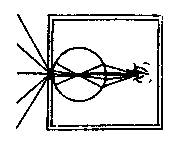 CHArt
CHArt  CHArt
CHArt Computers and the History of Art - 1999 Conference Paper Abstract
Unlike a quick-time-show on a web-site, the Virtual Reality Lab provides a high-end virtual reality based on state-of-art technology. Virtual reality contents can be shown on a large screen sized 2m x 7m (1000 x 3500 pixels) with multi projection system. The Virtual Reality technology was originally developed for military purpose like a flight simulation for pilot training. However, in the last few years the technology has been introduced for more civilian uses such as medical training, architecture simulation or even art and archaeology. This talk describes a core project to develop virtual reality technology and to produce VR contents in the field of works of art and cultural heritages to make the most of the technology. The project started in early 1997. We have already done several experimental projects. The first one is to reproduce the whole interior of the Sistine Chapel in Vatican, of course after the restoration. By the help of super computer by America's Silicon Graphics Inc, three-dimensional computer graphic images can be calculated and displayed at almost real-time rendering, which is 30 frames per second. The talk will also describe subsequent projects, such as the VR presentation of a Japanese work of art, 17th century painted screens of Grand View of Kyoto.